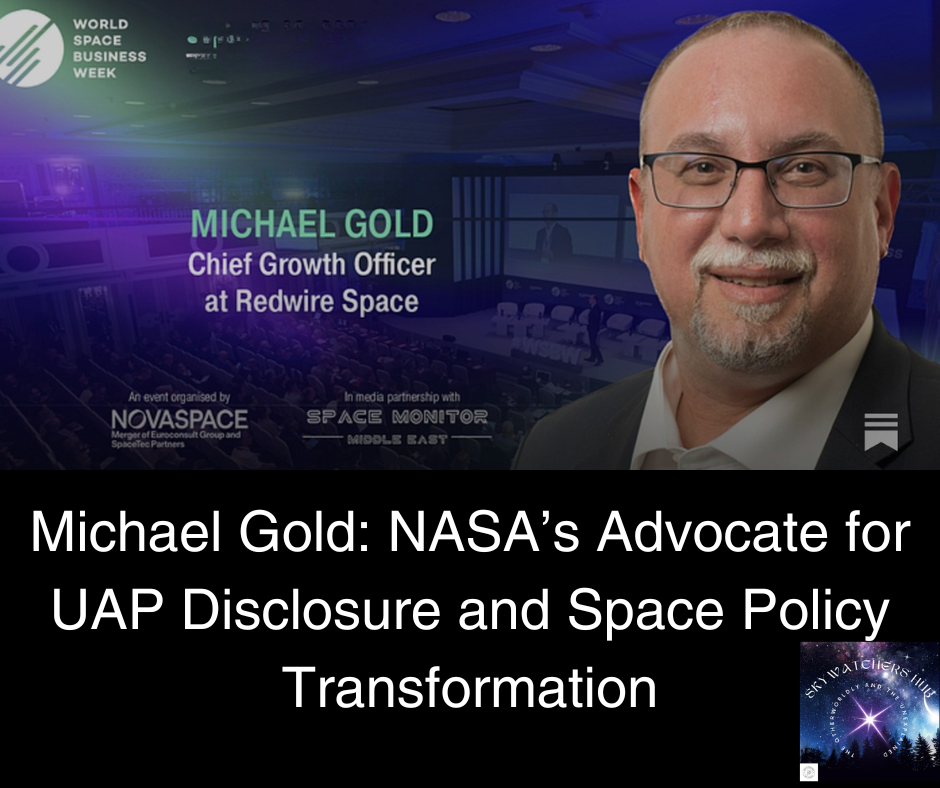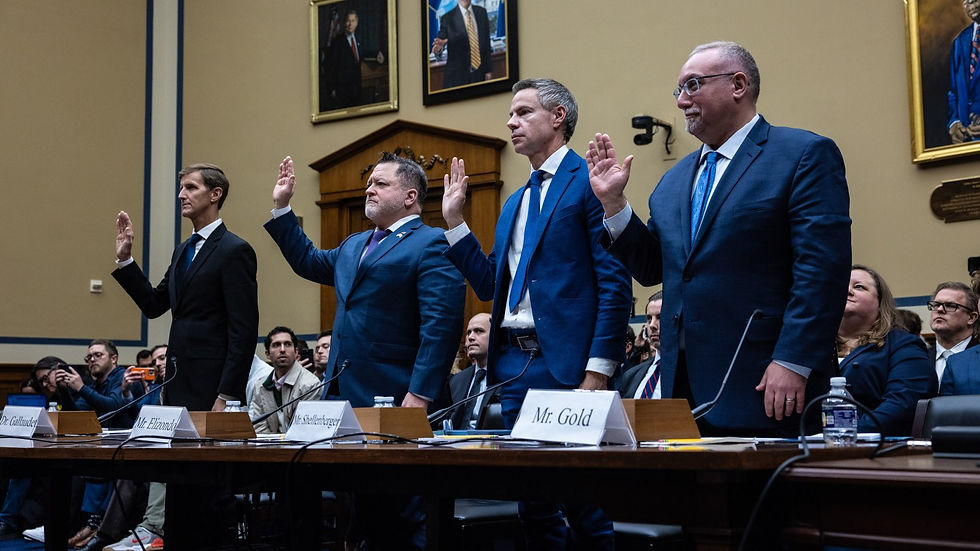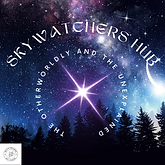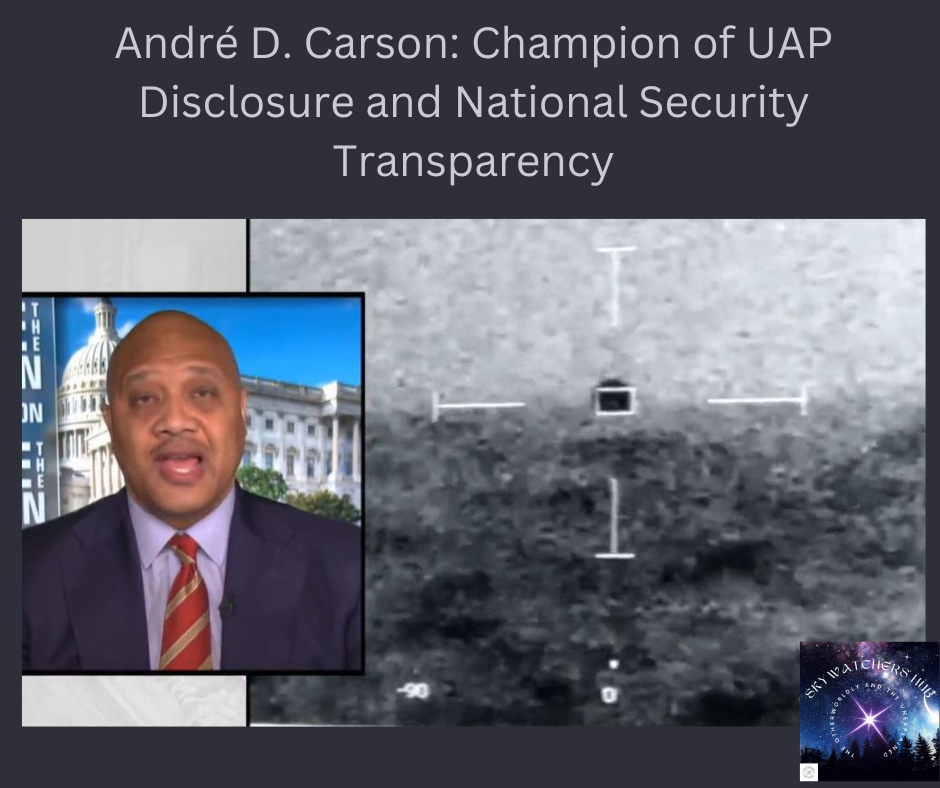Michael Gold: NASA’s Advocate for UAP Disclosure and Space Policy Transformation
- Skywatcher's Hub

- Feb 16
- 6 min read
Updated: Mar 1

Michael Gold, NASA’s former Associate Administrator for Space Policy and Partnerships, played a crucial role in shaping NASA’s direction in the modern era. His leadership in advancing space policy and cultivating international partnerships set him apart as an influential figure in the world of space exploration. However, Gold’s story also intertwines with a very modern issue: Unidentified Aerial Phenomena (UAP).
Though he is best known for his expertise in space policy and international collaboration, Gold’s involvement in UAP disclosure highlights a unique intersection between space exploration, government transparency, and national security. His perspective, honed through years of policy and partnership experience at NASA, made him an unexpected yet key voice in the ongoing push for transparency regarding UAPs.
This post delves into Michael Gold’s background, how his career shaped his views on UAP disclosure, and how his work at NASA positioned him to advocate for more openness regarding these mysterious phenomena.

A Distinguished Career in Space Policy
Before stepping into the realm of UAPs, Michael Gold had an accomplished career as a space policy expert. His work at NASA was pivotal in driving the agency’s partnerships with both international space agencies and private companies. As the Associate Administrator for Space Policy and Partnerships, Gold oversaw some of the most crucial initiatives for NASA, including international collaboration on major space exploration projects and efforts to expand the role of the private sector in space.
Gold’s influence helped solidify NASA’s role not only as the leader in space exploration but also as a key player in global space policy. His leadership touched on areas like commercial space innovation, international cooperation on space missions, and the advancement of science and technology through collaborative efforts. For Gold, space policy was not just about launching missions; it was about creating a framework for long-term global cooperation and a unified vision for the future of space exploration.
Gold also worked tirelessly to develop a more inclusive and forward-thinking space strategy, focusing on making space more accessible for all, from government agencies to private enterprises and international partners. He was deeply involved in building relationships between the U.S. and international space agencies, ensuring that NASA’s future endeavors were shared globally for the betterment of humankind.

The UAP Phenomenon: A New Frontier
Gold’s extensive experience in space policy gave him a unique vantage point when the conversation about Unidentified Aerial Phenomena (UAP) began to grow. The U.S. government’s increasing attention to UAPs, particularly within the Department of Defense and intelligence agencies, eventually garnered national and international interest. With military personnel regularly encountering objects that defied known technologies and laws of physics, it became clear that UAPs were not just a national security issue but a scientific mystery worth exploring.
As a former leader at NASA, Gold was keenly aware of the need for scientific investigation and global cooperation when it came to unexplained phenomena in the skies. His background in space exploration policy and international collaboration positioned him as someone who understood the gravity of UAPs from both a security and scientific perspective. Given NASA’s historic role in investigating extraterrestrial phenomena (including the search for life on other planets), Gold recognized that the agency had a duty to approach UAPs with the same rigorous, evidence-based mindset that had driven its exploration of space.

NASA’s Role in UAP Disclosure
Gold’s leadership at NASA came at a time when interest in UAPs was rising in both the public and political spheres. Following the release of military footage and reports that showed U.S. Navy pilots encountering unexplained aerial objects, the U.S. government and its defense agencies began to take the matter of UAPs seriously. But there was a notable gap when it came to scientific inquiry—NASA had historically steered clear of UAP investigations, leaving the Department of Defense to handle them.
Gold’s position at NASA, however, allowed him to influence the agency’s approach to UAPs. Unlike other agencies focused primarily on defense, Gold believed that NASA could provide a science-driven perspective on the issue. With NASA’s focus on exploration and its scientific integrity, he became one of the leading voices advocating for the agency to take a formal stance on the issue of UAPs. His involvement was pivotal in opening the door for NASA to establish a dedicated UAP task force that would not just collect data but also ensure that the scientific community played an active role in addressing the phenomenon.
While NASA had long been committed to space exploration, Gold recognized that UAPs were an unexplained phenomenon that could have significant implications for our understanding of the natural world. Just as NASA had once pushed the boundaries of scientific discovery in space, he believed it could now lead the way in providing a clear, rational, and scientific approach to understanding UAPs.\

Gold’s Advocacy for Transparency and Accountability
Gold’s advocacy for UAP transparency was rooted in the scientific principles that had guided his entire career. He pushed for the release of government data on UAPs, encouraging the scientific community to be open-minded, data-driven, and transparent in their investigation of these phenomena. For Gold, the central question was not just about whether these objects posed a national security threat but whether they represented a new frontier for human knowledge—an opportunity to expand our understanding of physics, space, and perhaps even life beyond Earth.
Gold understood that the public had a right to know what the U.S. government was investigating regarding UAPs. Transparency was key, not only to address the public’s curiosity but also to allow the scientific community to bring its resources, expertise, and innovative technologies to bear on the problem. He called for the creation of a collaborative scientific framework where both government and civilian researchers could come together to study UAPs, much like the collaborative model that NASA had used for decades in space exploration.
By championing this approach, Gold sought to bring scientific rigor and intellectual openness to the discussion about UAPs. His calls for the declassification of information and a more transparent U.S. government policy on UAP investigations mirrored his larger approach to space policy: create an open, inclusive, and international effort to tackle an unknown challenge.

A New Role for NASA: Exploring UAPs and the Future of Space Exploration
As NASA has continued to explore UAPs under the leadership of Gold’s successors, the agency’s role in investigating UAPs is becoming clearer. What began as an issue largely focused on defense and national security has evolved into a more complex scientific inquiry that involves NASA’s expertise in space science, exploration, and technology. Gold’s work helped to create a pathway for NASA to formally engage with UAPs—recognizing the potential for discoveries that could expand humanity’s understanding of the universe.
Gold’s efforts to push for UAP transparency have now laid the groundwork for future NASA missions that might include UAP investigation as part of their broader space exploration efforts. These missions could involve new technologies and methods to collect data on UAPs, integrating findings with broader scientific research on space and extraterrestrial life.
As a key figure in shaping NASA’s policies and partnerships, Gold's influence is still being felt. His efforts to push NASA to take a formal and scientific stance on UAPs have left an indelible mark on how the agency views its role in investigating the unknown. In turn, this has opened the door for more collaboration between military, intelligence, and scientific communities—each playing a role in solving the UAP mystery.

Conclusion: Michael Gold’s Legacy in UAP Disclosure
Michael Gold’s career at NASA has left an undeniable legacy in space exploration, policy, and UAP advocacy. As NASA’s former Associate Administrator for Space Policy and Partnerships, his focus on scientific integrity, international cooperation, and transparency set the stage for the agency’s current efforts to engage with UAP phenomena. By advocating for the public release of UAP data and urging for a collaborative, science-driven approach to investigating these aerial phenomena, Gold played a critical role in the growing push for UAP disclosure.
Through his work, Gold demonstrated that space exploration and UAP investigation could be interconnected, with scientific inquiry leading the way. His advocacy for transparency and accountability continues to shape how NASA and the broader scientific community approach the study of UAPs, making him a pivotal figure in the ongoing conversation about UAPs and humanity’s place in the cosmos.


.png)









Comments